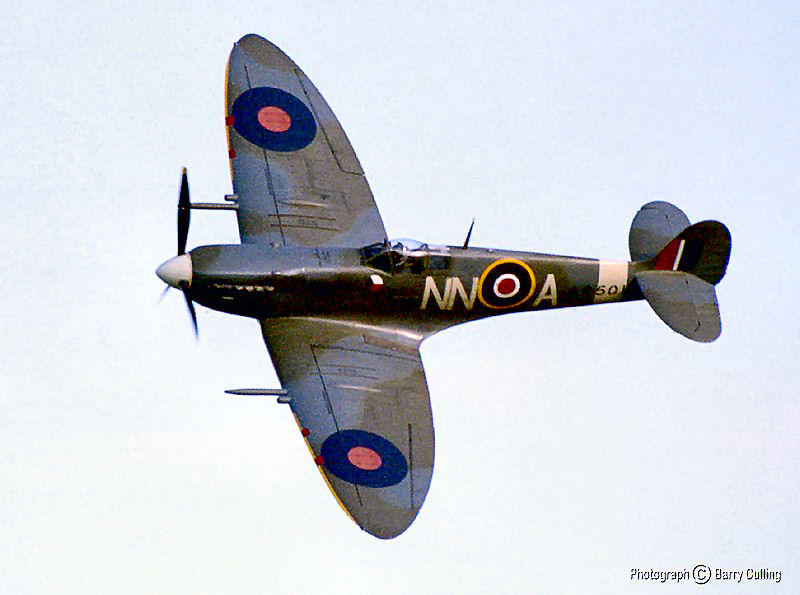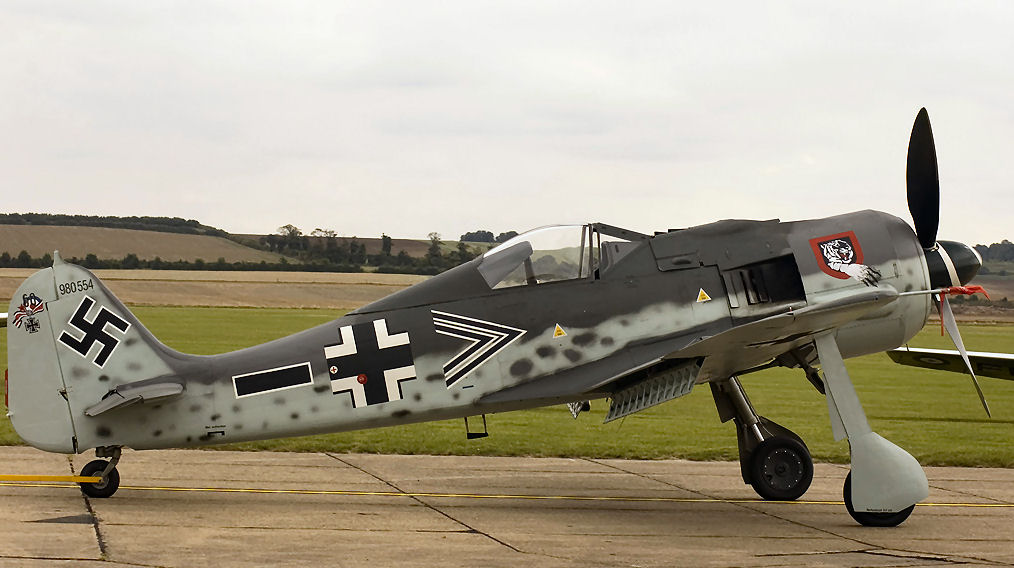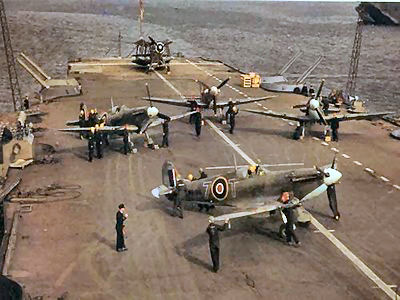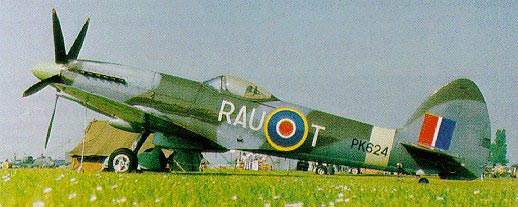|
Radschool Association Magazine - Vol 31 Page 13 |
|
Privacy Policy | Editorial Policy | Join the Association | List of Members | Contact us | Index | Links | Print this page |
|
|
|
Spitfire BL628.
The following article was sent to us by Kevin Arditto (right), an Ex RAAF maintenance bloke who now lives down near Avalon airport in Victoria. After the RAAF, Kevin was an engineer with Australian Airlines and after leaving Australian Airlines (now Qantas) in 1994, he became involved in aircraft restoration. He was a major contributor in the restoration of the Spitfire.
|
|
|
|
|
|
He says: “This photo of the first post-restoration flight, was taken at Ardmore Airport, which is just south of Auckland in New Zealand on the 29 Sept 2009. The aircraft is a Mark Vb Spitfire, RAF number BL628. It never served in Australia but was operated mainly by Canadians, one of who flew 99 missions over Holland and France and lived to tell the tale
This particular aircraft was delivered from Castle Bromwich in January 1942 and was initially allocated to No. 410 Squadron RCAF at Gravesend. It became the personal aircraft of George "Scotty" Murray (right) who named it Marion after his girlfriend. It subsequently served briefly with No. 308 Squadron 31st Fighter Group USAF in Aug 1942, then Nos. 167 and 610 Squadrons.
As the Mark V version became obsolescent, BL628 was converted to a "hooked Spitfire", but without folding wings, and assigned to the Royal Navy who managed to damage it in a hard landing to the extent that it was not repaired. The war ended and it was put up for disposal and the fuselage minus tail and engine was bought by a farmer in Devon for his kids to play in.
There it was found in a derelict state some thirty years later by two blokes from Australia in about 1977. It was acquired and was brought back to Australia where it was painstakingly rebuilt using components scrounged from various scrap-yards in the UK. The UK Spitfire restoration movement had known about it for years but did nothing about it. Of course they howled blue murder when these two Aussies whipped it out from under their noses...
In the process, the aircraft went back to the UK in 1991 for a short period, then back to Australia, where it received a new pair of wings built on the Isle Of Wight, UK. More recently the aircraft was transferred to Avspecs Ltd in Auckland, New Zealand for final assembly. Avspecs had become known to us and they were well set up for specialised Spitfire work. The UK built wings were completed in NZ, plus the fitting out. The engine and prop work had been done in Australia prior to shipping the aircraft over the Tasman.
As the years ticked over, it finally became apparent that the partnership would not be able to throw the extra manpower at it in a time frame that would produce a timely roll-out. About the same time an up-and-running P-51D Mustang from West Australia became available and a deal was done. I think it would be fair to call the result a win-win. The aircraft was disassembled and shipped to its new owners, the Rod Lewis Collection (above right) in San Antonio, Texas, where it is now flying.
The success of Marion's restoration brings up the number of airworthy Spitfires Mk. V in the world to seven. At this year's Oshkosh Air Show it won the EAA "Best Fighter" Award. Not quite "Grand Champion", but still acceptable. A lot of "We wuz robbed" feelings at the end of the award ceremony... It would take a purge of the EAA Judges for a non-US aircraft restored outside the US to walk away with a "Lindy" (as the Grand Champion Trophy is called...).
The project certainly caused frustration at times, but the end result was very satisfying. A real ANZAC project, in the end. BL628 has set the standard for all future Spitfire projects. Looking back, it was good to have been part of the achievement."
You can see more photos of this wonderful old aircraft HERE
|
|
A Greek and a Scotsman were sitting in a Starbuck's cafe discussing who had the superior culture. Over triple lattes the Greek guy says, 'Well, we Greeks built the Parthenon,' arching his eyebrows. The Scotsman then replies, 'Well... it was the Scots that discovered the Summer and Winter Solstices.’ The Greek retorts, 'We Greeks gave birth to advanced mathematics.’ The Scotsman, nodding in agreement, says, 'Scots were the ones who built the first timepieces and calendars.’ And so on until the Greek comes up with what he thinks will end the discussion. With a flourish of finality he says, 'The Greeks were the ones who invented sex!' The Scotsman replies, 'Aye, that is true, but it was we Scots who introduced it to the women.
|
The History of the Spitfire Development.
In mid 1934 the
Air Ministry released its requirement for an eight-gunned fighter to
replace all the other fighters in service. It would reach over 275 mph
and have an excellent rate of climb. The pilot would be seated in an
enclosed cockpit which would house radio equipment and an oxygen supply
that would enable the aircraft to f
In July 1934
Reginald Mitchell (right) announced that he had been working on a new
fighter design incorporating both the Schneider trophy winning aircraft
and the type 224, another design that Mitchell had been working on. By
chance this design had an enclosed cockpit, retractable undercarriage,
and did away with the gull-wings. This new aircraft was designed to
house the new Rolls Royce PV12
On 6th November 1934, Vickers gave the go ahead for the construction of a company-funded prototype, the type 300. In December that year, the Air Ministry reviewed the design and allocated £10,000 for what they designated the F37/34. The wooden mock-up of the, as yet, unnamed aircraft followed in April 1935 and was viewed by the Air Ministry staff who said to Mitchell that his fighter would perform as well as any other fighter for the 1940's that they had seen, but it needed to have eight guns. It was discovered that by building an elliptical wing, the aerodynamic qualities of the aircraft were improved and it allowed eight guns to be fitted in the wings, four in each.
The thin wings, small head-on fuselage section and extra attention to streamlining all came together to produce a most elegant and fast fighter aircraft. It was hoped that the prototype would fly in October 1935, but it was the competing Hurricane that flew first. The unpainted Supermarine Type F37/34 did not fly until March 1936. The pilot, Mutt Summers, flew the aircraft, still unnamed but now registered as K5054, around the airfield checking the flaps and flying characteristics of the plane. The undercarriage was not retracted during this maiden flight. After only a few minutes K5054 landed and Summers announced to the anxious spectators that all was fine and that he did not want anything touched.
After this
historic first flight, Mutt Summers made three or four more test
flights. The aircraft was then returned to the workshops to be repainted
high-gloss blue/grey. On the 27th March 1936 test pilot Jeffrey Quill
flew K5054 to set accurate performance figures of 335 mph at 17,000
feet. This proved disappointing compared to Mitchell's estimated 350
mph. Supermarine had already been
Only seven days later on 3rd June 1936, before any test reports had reached the Air Ministry, the Royal Air Force placed a production order for 310 Supermarine Spitfires.
But from where did the name "Spitfire" originate? During the designing and building stages of the type 224, Supermarine were dreaming up names for the finished aircraft. At that time Sir Robert McClean, the chairman of Vickers (Aviation) Ltd., decided that the name should suggest something venomous and because Supermarine began with an S he decided that so too should the fighter's name. Out of a host of probable names, such as the Shrike and the Shrew, came the name Spitfire and although Mitchell was not too impressed with this, the Air Ministry and Sir Robert both agreed on the name.
Just after a
year since the prototype, K5054, flew and when large orders for the
Spitfire were coming in, R.J. Mitchell died after a long fight to beat
his cancer. His assistant, Mr. Joseph Smith, took control of the design
office at Supermarine and continued to design all the future Spitfire
marks including the work on the
On the 4th August 1938, only one year before the Second World War, the first production Mk I Spitfire, K9789, was delivered to 19 Sqn Royal Air Force at Duxford. Within twelve days the second aircraft was delivered and by May 1939 the squadron had a full complement of sixteen Spitfires and was fully operational. The first aircraft was fitted with the Marlin II engine which produced 990 HP at 12,000ft. It had a wing span of 37ft, 8in, was 29ft, 11in long and had an AUW of 5,200 pounds. (A Cessna 182 has an AUW of 3,100 pounds).
The final cost of the spitfire prototype, totalled £20,765 ($41,530). This bill was paid by the Air Ministry paying £12,478 and Rolls Royce paying £7,500, so it can be said that Supermarine built the aircraft at a final cost of only £787.
The end for
K5054 came at the Royal Aircraft Establishment at Farnborough on the 4th
of September 1939 when the aircraft nosed over on landing and, whilst
the fuselage was left intact, the cockpit was crushed.
The pilot died of injuries caused by the mast, mounted atop the fuselage behind the pilot, being pushed down through the fuselage and pulling the Sutton seat harness back with such a force that he bent the back of the seat on impact with it. As a result, a modification was made to the run of the cable that anchored the harness to the rear of the fuselage. Rather ironically the accident that destroyed the prototype occurred one day after war was declared on Germany.
On the first day of World War Two the RAF had some 182 Spitfires in service, 150 of which were fully serviceable and ready for action. But it was not to prove its worth against the enemy until the 16th October 1939 when aircraft from both 602 and 603 Royal Auxiliary Air Force Squadrons were scrambled to meet a number of attacking Ju 88's (below) that were attempting to sink the naval ships off Rosyth. The three Mk 1 Spits from 603 Sqn all claimed to have hit and sent down enemy aircraft that subsequently crashed into the sea off Scotland's east coast.
Events such as
those mentioned above were rare and it wasn't until May 1940 that the
Spitfire could really show its true colours, by which time the
development of the Spitfire was well on the way. In April 1939 an order
was placed for 1,000 new Mk II Spitfires to be built at the Castle
Bromwich aircraft factory, which today is the main factory for Jaguar
cars. The first production Mk II was flown to
Rolls Royce were now developing a two-stage supercharger that gave 1,240 hp to the new Merlin XX engine, and Supermarine placed the new powerful engine into the spitfire airframe and the Mk III was born. Because of production problems this new aircraft was not produced in great quantities, but the plane went on to become the base for the Spitfire Mk IV.
On the 4th December 1939 Supermarine produced their specification for the Mk IV, the main characteristics being an aircraft, powered by the new Griffon engine, capable of reaching 420 mph and able to climb to 15,000 ft in only 4½ minutes. Endurance was also increased by half an hour. With modifications carried out on the Mk III airframe, the only major changes to be done to the new Spitfire were to design new engine mountings and add an additional fuel tank in the fuselage. After seeing the results of the wind tunnel tests at Farnborough, the Air Ministry announced its plans to introduce the Mk IV into the RAF by the end of 1941. The RAF requested that the new spitfire carried either 6 X 20 mm cannons, 2 X 20 mm cannons and 8 X .303 Browning machine guns or 12 X .303 Brownings. Supermarine elected to go for the six cannon requirement and it was planned to have the aircraft airworthy by August 1941. This was rather over ambitious and the first Mk IV did not fly until 27th November 1941.
Running almost parallel to the designing of the Mk IV was the designing of the Mk V, which remains probably the most loved of all the Spitfire marks. The Mk V saw the return of the Merlin engine and in fact went on to use five different Merlin engines, these being the Merlin 45, 46, 50 or 50A and the LF Mk V used the Merlin 50M or 55M.
From the results of the trials of a Mk I carrying the new Merlin engine the Air Ministry realised that this new Spitfire was going to be an outstanding success, and ordered production of the new fighter immediately. In March 1941 Castle Bromwich started to build the new Mk V and re-engine the older Mk I aircraft, bringing them up to Mk V specification.
There were to be four major variants of the Mk V, these being the Mk VA, Mk VB, Mk VC and the LF Mk V, a Spitfire with the wingtips squared off to improve the handling characteristics at low altitude. The Mk V Spitfire, favourite of the famous Douglas Bader, had a top speed of 369 mph and could reach 35,000 feet in 15 minutes.
The differences between the VA, VB, VC were mainly in the weaponry and wing design. The Mk VA carried 8 X .303 Browning machine guns and with a change of wing the Mk VB carried 4 X .303 Brownings and 2 X 20 mm Hispano cannons. The VC was fitted with a universal wing that could accept either the VA or VB weapons fit.
In September 1940 when the Woolston and Itchen plants were heavily bombed, production of the Spitfire was dispersed around the country, although the majority of the new factory plants were sighted in the Hampshire area. Car showrooms and even hotels were used for building parts of the aircraft. There were three main assembly points in central Hampshire, Chattis Hill near Stockbridge, Worthy Down near Winchester and High Post. The arrangement for building and assembling the Spitfire was a good one for tactical reasons, however this made keeping track of where the spare parts were made, and for which mark of aircraft, difficult.
The need for reconnaissance aircraft was seen in the early stages of the war, and quite early in its development the Spitfire was to be fitted with cameras. The first to be fitted up was the Spitfire Mk IV, and from then on all photo-recce Spitfires were to have the prefix of PR before the Mk, i.e. the Spitfire IV became the PR Mk IV. With the engines and cameras uprated came two new marks of Spitfire, the PR Mk VI and the PR Mk VII. Both of these new aircraft were short lived in this role and the aircraft went on to become, again, the base of another later generation Spitfire. All photo-recce Spitfires were unarmed to allow a greater fuel load and therefore better the endurance, allowing the PR Spits to fly deep into enemy territory.
On 4th August 1942 L1004, a former Mk IA which had been converted to a Mk VA, flew to the Heston aircraft workshops to be fitted with a new Merlin 32 engine, the DeHaviland four bladed propeller, two cameras and four 0.303 Browning machine guns. L1004 was to become the first armed PR Spitfire, the PR Mk XIII, and it was the answer to all the low-level photographic problems.
Having found that squaring off the wing tips improved the low level flying capability of the Spitfire, work was started to improve the high altitude characteristics. The wing tips of a Mk VI were extended and made more pointed, the cabin was pressurised and with various other small changes the aircraft became the HF Mk VI. In December 1941 a supercharger was fitted to the engine and it became the Spitfire F/HF Mk VII.
A feature that linked these latest marks of Spitfire was the 27 litre Merlin 61 series of engine. The Merlin 61 engine went into an uprated Mk VC fuselage and became the Mk VIII. Delivery of the Mk VIII began in April 1943 and the first examples built were to be HF Mk VIIIs. A small number of Mk VIII Spitfires were to be converted to two seat trainer aircraft. This was another private venture by Supermarine and was never accepted by the Royal Air Force, however the Irish Air Corps were to later purchase the aircraft.
First built in 1933, and when production ceased in 1950, a total of almost 150,000 Merlin engines had been delivered.
The Mk IX Spitfire was also an adaptation of the Mk V, and used the Merlin 61 engine with a four bladed propeller. The early Mk IX aircraft were delivered in June 1942 to 64 Squadron based at Hornchurch. Timing could not have been better because the Germans had just developed the Focke-wulf 190 fighter, and it was at least 30 mph faster than the RAF's Mk V Spitfires. The Merlin 61 gave the Mk IX an increase of 70 mph over the top speed of the older Mk V. It was soon found that the Fw 190 operated best between 14,000 and 20,000 ft, a height that the Spitfire Mk IX did not handle at its best. So the HF and LF series was adopted by the Mk IX. The HF Mk IX carried a Merlin 61 or 63 engine whilst its LF sister aircraft carried a Merlin 66. Within months of entering service the Mk IX replaced almost all the serving Mk V Spitfires and became the new workhorse of most fighter squadrons.
There is not much known about the Spitfire Mk X, except that it was a photo-recce aircraft with a pressurised cabin. It is thought that only sixteen PR Mk X Spitfires were ever built. The arrival of the PR Mk XI saw the return of the Merlin 60 series of engines. There were some 470 PR Mk XIs built, but life for this Spitfire was short and soon it was replaced by an updated model.
On the 8th August 1942 the first Griffon 61 engined Spitfire took to the air. It had a top speed of over 450 mph and could reach 30,000 ft in less than eight minutes. This new Spitfire, the Mk XII, was to take on a fighter role and fifty were ordered to be built by the end of that year. This was an impossible task and the first production aircraft was not to fly until October. Only five of the fifty ordered were ready by the end of 1942 and only 100 Mk XIIs were ever built.
When some early Mk IX Spitfires were fitted with cameras the "specialised" airframe was designated the PR Mk XIII, although this mark was short lived and replaced by the PR Mk XIV. This newest Spitfire was also powered by the Griffon engine and used a new five bladed propeller. The first operational Mk XIV was delivered to the RAF on the 20th December 1943; it was so successful that 400 aircraft were ordered in February 1944. It was not too long before the RAF wanted to fit the aircraft with cameras and so the PR Mk XIV emerged. The pilot’s vision was soon aided by Supermarine fitting the Spitfire with a "tear drop all-round-view" canopy. The Mk XIV was soon sent out to the Far East, but did not see any action there because the hostilities ended before the units were operationally ready. Over 950 Mk XIV Spitfires were built, and the airframe went on to become the sophisticated Mk XVIII.
The Royal Navy had been operating the early Spitfire marks from their aircraft carriers, but had taken a liking to the RAF's Mk V range of aircraft. The Navy had been calling their aircraft Seafires and had used the name Seafire Mk I, II, and III for their different models. The Air Ministry agreed that the Navy should have the use of the Griffon engined machines but would not allow them to name it the Seafire Mk IV. Ordering parts was already confusing enough and so to make life easier for the stores boys the Navy Spitfire became the Mk XV, although it was always referred to as a Seafire. The prototype was rolled out of the Hursley Park Experimental Hangar in November 1943.
In June 1940 the American engine company Packard started to build their own variant of the Rolls Royce Merlin engine. This American built engine was primarily for use in the P-51 Mustang, but in early 1944 the engine was placed in a Spitfire and the aircraft was named the Mk XVI. Production began in October 1944 and the aircraft entered service the very next month with the Coltishall Wing. They used the Spitfire as a fighter/bomber on attacks on the German V-2 rocket sites.
In order to bring their Mk XV Seafires up to specification with the RAF Spitfires the Navy requested that they have the new "tear drop" canopies fitted. Again the Ministry agreed and work was started by Westland Aircraft in Yeovil. The prototype Navy plane, the new Mk XVII, was air tested at Boscombe Down and was so successful that the remaining Seafire Mk XVs yet to be built were to have the conversion included.
As mentioned earlier, the Mk XIV was so successful that a sophisticated version, known as the "Super Spitfire", was built. The "tear drop" canopy was used again and with a Griffon engine, a modified fuselage and wing shape, the Spitfire Mk XVIII was introduced. This aircraft was capable of over 470 mph, and production started in March 1945.
The Spitfire designated the Mk XIX was a long ranged, Griffon engined PR version of which 225 were built. Two of these aircraft are still airworthy and form part of the Royal Air Force Battle of Britain Memorial Flight.
The war was now drawing to an end and Spitfire production was slowing down, however as far back as 1943, plans were afoot to put a two-stage supercharger on the Griffon engine. This range of Spitfires were to be the Mk XX. Information on this mark is also scarce and again it is thought that not many were produced.
March 1944 saw the prototype Mk XXI take to the air with a Griffon 61 engine. It was capable of giving over 2,000 hp and the aircraft was taken on as a high altitude air superiority fighter with a forecasted speed of over 470 mph. Sadly the prototype could only reach 450 mph and so the aircraft proved to be a disappointment. At the end of World War Two only 120 Mk XXI Spitfires had been built, all with the return of the older style cockpit and canopy.
From January 1946 four RAF squadrons operated the Mk XXIs, the last example being retired from service in August 1947. At this time the Air Ministry declared that as from the Mk XX, all Spitfire marks would change from roman numerals to arabic and so the Mk XXI became the Mk 21.
Between March 1945 and February 1946 a batch of F Mk 22 Spitfires were delivered to the RAF. The F.22 saw the return, again, of the "tear drop" canopy, but it was virtually the same aircraft as the F Mk 21. The new Mk 22 had severe vibration problems and a much modified tail fin was introduced. Many Mk 22 Spitfires were used by the Auxiliary Air Force but were phased out and replaced by the new Vampire and Meteor jet fighters.
In early 1944 Supermarine and the RAF at Farnborough were discussing incorporating the revised high speed wing with the "Super Spitfire". The prototype F Mk 21, PP139, was used to test the wing and the aircraft was named the prototype F Mk 23 Spitfire. However the aircraft was also called the "Valient". This aircraft was another failure for Supermarine and so work started on the Spitfire F Mk 24, the last Mk of Spitfire to be built.
This last Spitfire was a fully fledged ground attack aircraft that used the short barrelled Hispano Mk 5 guns. First delivery of the F.24 took place at South Marston on the 13th April 1946. Only 80 Squadron, based in Germany, operated the F.24 and took them with them to Hong Kong. They remained at Kai-Tak airport, Hong Kong from July 1949 to January 1952. It is said in Hong Kong that the Spitfires remained there and were bulldozed into the sea when the runway was lengthened by reclaiming land from the sea.
On the 20th February 1948, almost twelve years from the prototype's first flight, the last production Spitfire, VN496, an F Mk 24, left the production line. Some 22,500 Spitfires were built and now only a few dozen are kept in flying condition.
The content of this page is © The Spitfire Society 1999.
|
|
Arguing with your Boss is like wrestling with a pig in mud. After a while you realise that while you are getting dirty, the pig is actually enjoying it.
|
|
Back Go to page: 1 2 3 4 5 6 7 8 9 10 11 12 13 14 15 16 17 18 19 20 Forward
|
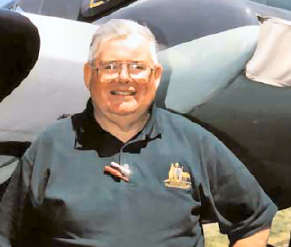

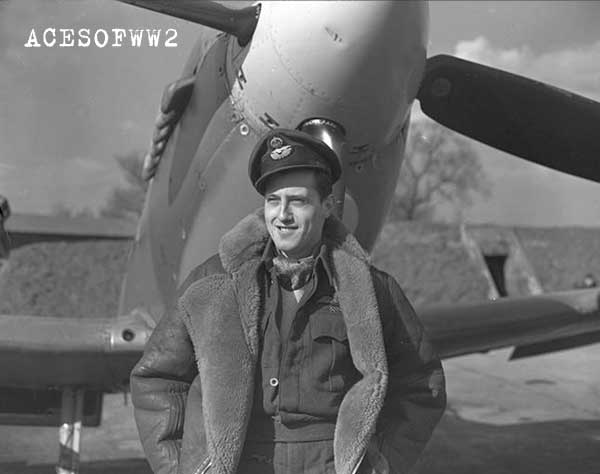
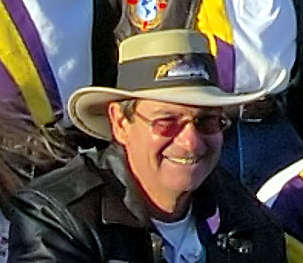
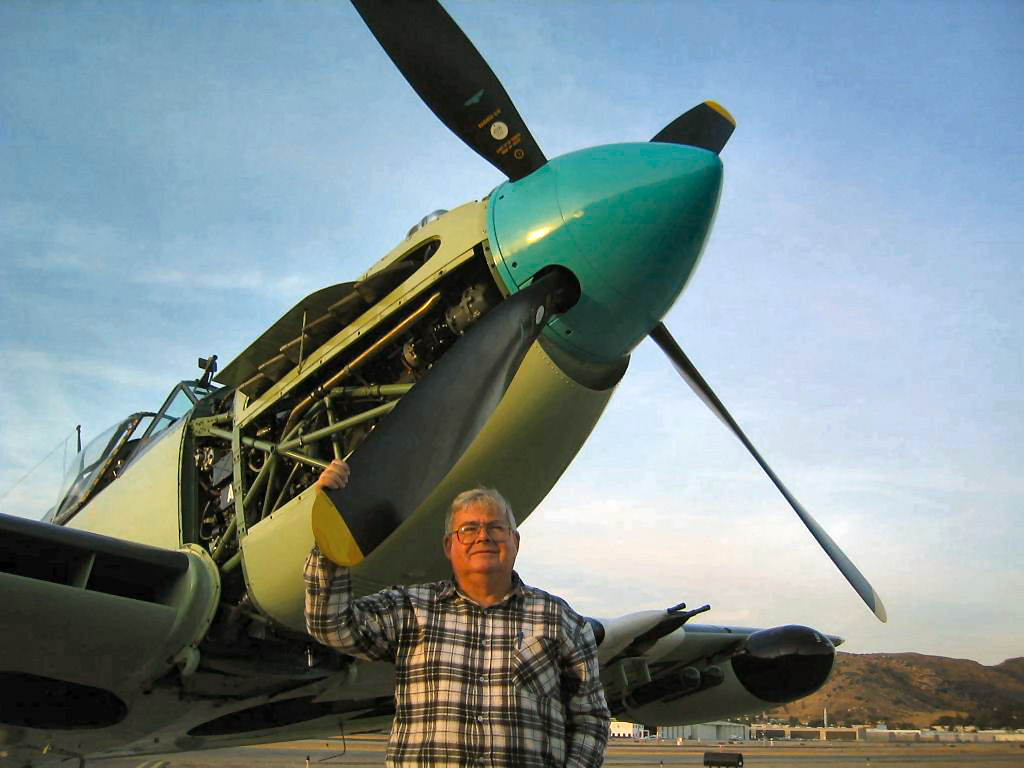
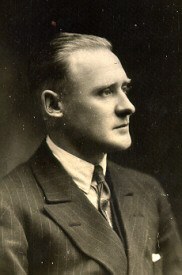 ly
at amazing heights. If it took too long for the aircraft to evolve, then
the top speed would have to be at least 300 mph, or even 350 mph.
ly
at amazing heights. If it took too long for the aircraft to evolve, then
the top speed would have to be at least 300 mph, or even 350 mph.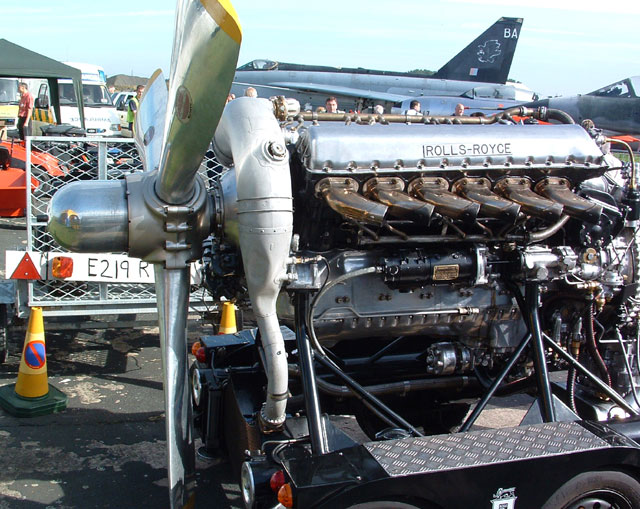 engine,
later to be known as the Merlin. Mitchell claimed that his aircraft
would fly by early 1935 and reach 265 mph. The Air Ministry turned these
designs away because they required eight guns whereas Mitchell's
aircraft only held four guns. Fitting these guns posed a major problem
because for a wing to hold eight guns it would have to be thicker,
similar to the new Hawker Hurricane aircraft; but this meant increasing
the aircraft's drag.
engine,
later to be known as the Merlin. Mitchell claimed that his aircraft
would fly by early 1935 and reach 265 mph. The Air Ministry turned these
designs away because they required eight guns whereas Mitchell's
aircraft only held four guns. Fitting these guns posed a major problem
because for a wing to hold eight guns it would have to be thicker,
similar to the new Hawker Hurricane aircraft; but this meant increasing
the aircraft's drag.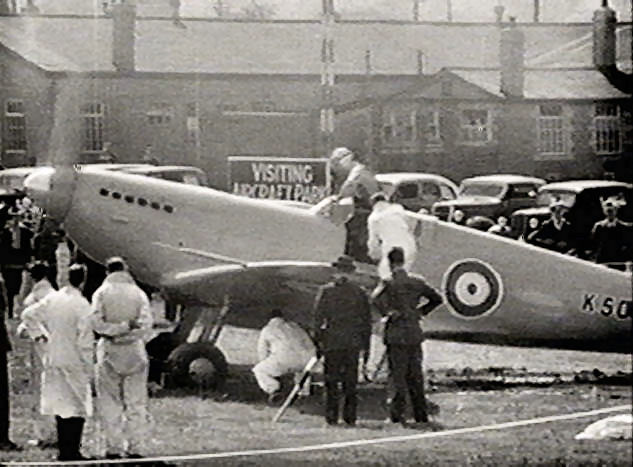
 working
on a new propeller with modified tips. This was fitted later on 27th
March and Quill took the aircraft up again this time achieving 348 mph.
This satisfied Mitchell and so the aircraft went to Martlesham Heath
(near Ipswich) for RAF trials on the 26th May 1936, flown by Mutt
Summers.
working
on a new propeller with modified tips. This was fitted later on 27th
March and Quill took the aircraft up again this time achieving 348 mph.
This satisfied Mitchell and so the aircraft went to Martlesham Heath
(near Ipswich) for RAF trials on the 26th May 1936, flown by Mutt
Summers.  Supermarine Spiteful aircraft that incorporated a large amount of the
original Spitfire design.
Supermarine Spiteful aircraft that incorporated a large amount of the
original Spitfire design. 
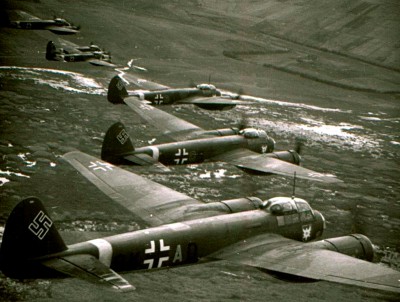 Boscombe
Down in June 1940. The main differences between the Mk I and Mk II were
small. Apart from the new Merlin XII engine, which ran on 100 octane
fuel, the only other difference was a Coffman cartridge starter that
replaced the older electric unit.
Boscombe
Down in June 1940. The main differences between the Mk I and Mk II were
small. Apart from the new Merlin XII engine, which ran on 100 octane
fuel, the only other difference was a Coffman cartridge starter that
replaced the older electric unit.